China is such a huge country that you’d probably spend a lifetime wandering across the massive landmass and still, in all likelihood, you’d miss out some of the fascinating places. There’s simply too much to see and explore in China. Usually, in most of the Chinese cities, you’ll find scenic mountains, historical temples, lakes, night markets, etc. Moreover, if you head to some 20-30km beyond a typical downtown area of a Chinese city, you’re likely to see a beautiful countryside where you can discover a more traditional form of life. In fact, so far, I’ve travelled to 23 Chinese cities (from Harbin to Guangzhou –going solo all over) and I’m still discovering China, still miles to go! In July 2018, I had a trip from Suzhou to Huangshan city (Anhui province).
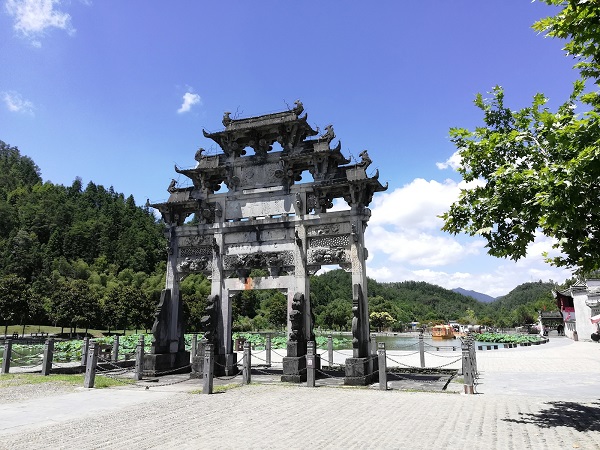
I’ve already written a few Yellow Mounatin blog-posts describing my Huangshan travel experiences. This is my final and last blog-post about travelling to Huangshan city, and in this blog-post, I’d share my memories of the Xidi ancient village (西递, Xī dì). A list of the top things to do in Xidi village is also included.
In fact, despite traveling heavily in China, I’ve only been to two cities of Anhui province – Huangshan and Hefei. I hope, I’ll have more opportunities to visit Anhui again. As such, Hefei is also a wonderful city and you may jump over to my Hefei travel blog-post- Hefei City, Anhui, China, Travel Review. You can find more about Anhui food as well – Authentic Chinese Street Food Restaurant In Hefei.

top things to do in Huangshan city
Here is the index of all my blog-posts from the Yellow Mountain trip – let’s call it a Huangshan travel guide-
- Huangshan logistics and general travel issues,
- Hongcun village (宏村, Hóngcūn),
- Yellow Mountain – Huangshan scenic area (黄山风景区, Huángshān fēngjǐng qū),
- Huangshan Hot Springs (黄山温泉, Huángshān wēnquán),
- Xidi village (西递, Xī dì) – covered in this blog-post.
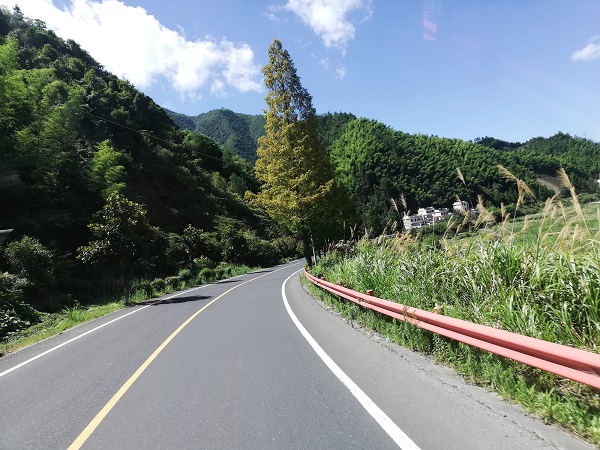
Where is the Xidi Ancient village?
The Xidi village is located in Huangshan city.
Check out the Huangshan travel map in my previous post to learn the exact GPS location of Xidi village.
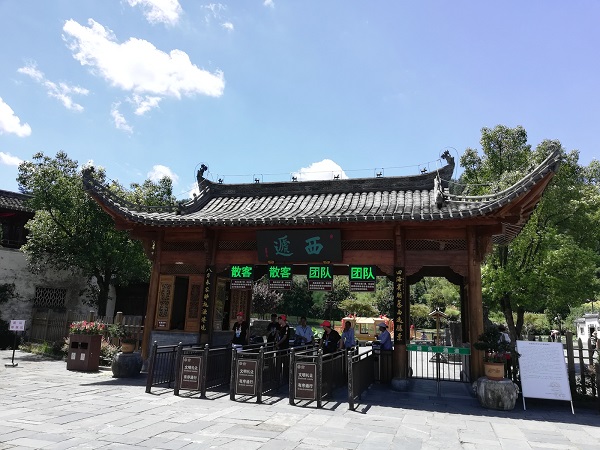
Xidi village Map
Let me provide you a simple Baidu travel Map of the Xidi village – I’m marking some of the top things to do in Xidi village in English.
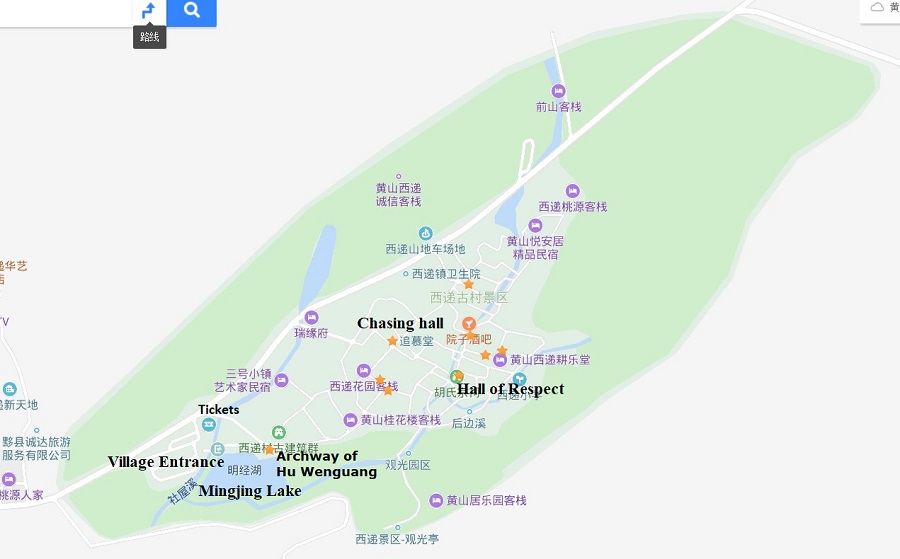
Brief history of Xidi Village
Xidi village has nearly a 1000 years long socioeconomic history. It was founded during the Northern Song Dynasty Emperor Renzong.
The original name of the village was Xichuan (west river) based on the prevalent water flowing through the village.
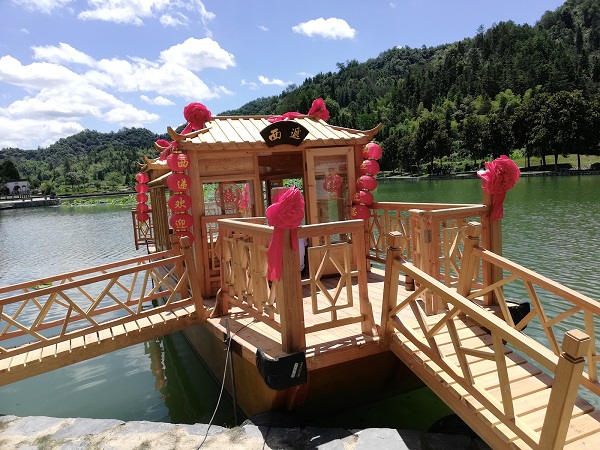
The village further developed in the Ming and Qing Dynasties as the local residents started working as merchants. More than 100 existing wooden structures were constructed during the same period. In fact, Xidi village is famous in China for its unique wooden architecture.
The village was included in the UNESCO world heritage site list in the year 2000.
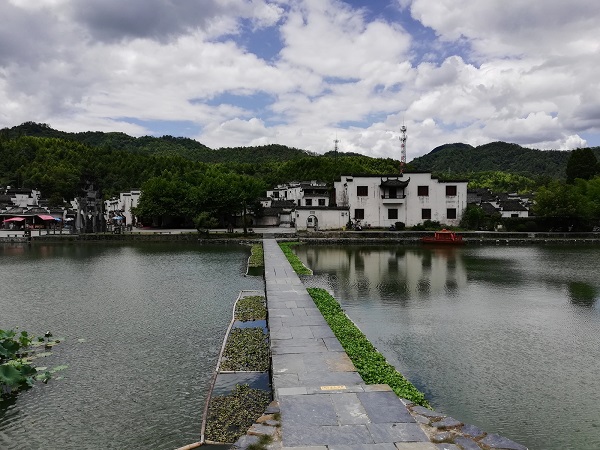
How do you get to the Xidi village?
There are direct buses available from different parts of Huangshan city to the village (and vice versa).
You can easily find buses departing on a regular interval from the following locations to Xidi-
- Huangshan Railway Station,
- Huangshan North Railway Station,
- Huangshan Bus Station,
- Tangkou Bus Station,
- Hongcun village.
My base in Huangshan city was in Tangkou and, obviously, I took a bus to Xidi from Tangkou.
There are at least three minibuses departing every day from the Tangkou Bus Station to Xidi. The non-stop journey takes ~1.5hrs. During my trip, there were only two passengers in the minibus. RMB 19. The scenery along the way looked absolutely stunning.
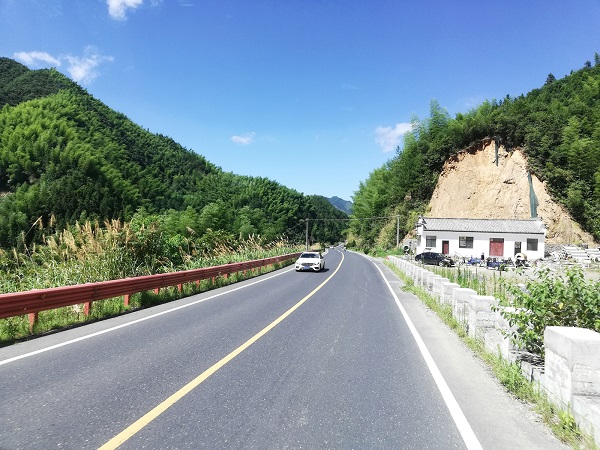
Please check out further details about the Huangshan public transport in my Huangshan logistics blog-post.
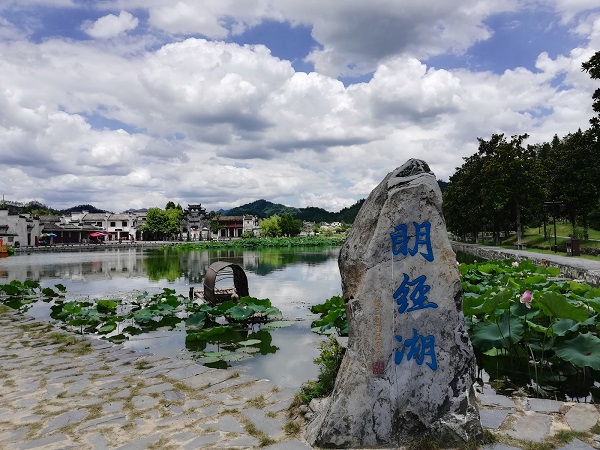
Locker and luggage
Well, Xidi was my last destination in Huangshan (before departing for Suzhou). So, when I travelled to Xidi village from Tankou, I carried all my stuff with me in a baggage.
After reaching Xidi, I put the baggage in a locker available in the waiting room (near the ticket office). The locker is available for free of charge – you’ll just need to present the entrance ticket to the Xidi village. That means, you can only put your luggage in the locker if you already have a valid entrance ticket to the village.

Huangshan xidi village ticket fee
The entry ticket price to the Xidi village is RMB 104. Of course, with a local student ID card or for an elderly person over the age of 60, there is a 50% discount. The ticket is valid for two days (so, it could be used on the next day as well). Please double check the ticket validity at the ticket counter.
Opening hours
The village is generally open to the tourists from 7:30 to 18:00.
How much time you need for Xidi Village?
Well, once in the village, around 3 to 4 hours would be a good time to explore Xidi ancient village. You can probably spend one fine morning or an afternoon wandering over here.
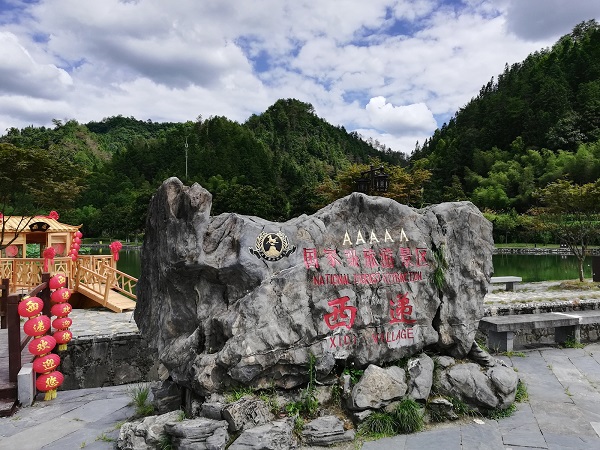
Best time to visit xidi?
I was travelling to Xidi in July and the weather was really too hot. I felt sweating most of the time. So, if you don’t like the summer season, you could probably skip July and August. Otherwise, Xidi is a perfect destination to stop by virtually in any season.
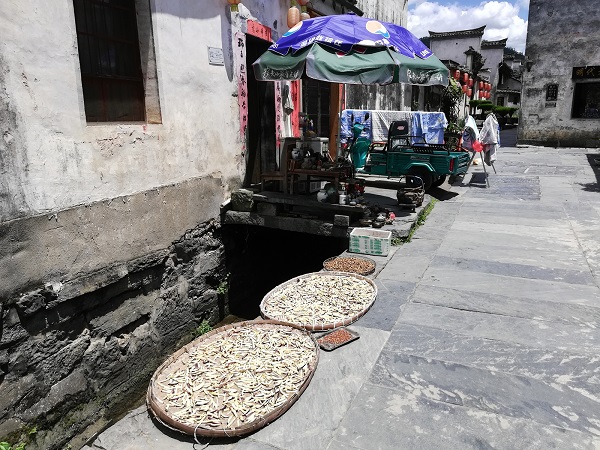
Top things to do in Xidi
Now let me quickly list down the top things to do in Xidi village, aka, the famous Xidi travel attractions.
Archway of Hu Wenguang
The Archway (胡文光牌坊, Húwénguāng páifāng), constructed during the Ming dynasty (1368 – 1644), is arguably the most famous scenic landmark of Xidi ancient village. The tall structure is 12.3 meters high and 9.95 meters wide.
It was built exclusively with the local stone called “Yi County Blue Stone”, with exquisite carvings that shows images of various expressions.
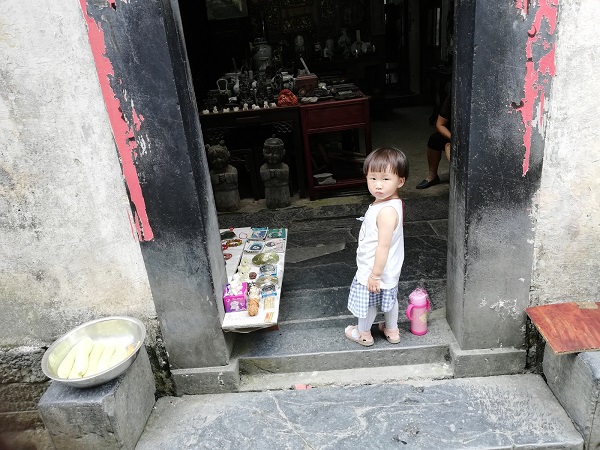
Built during the reigns of the emperor Wanli of Ming Dynasty, it is an archway in the honor of virtues and merits with the building format of “three arches, four columns, and five roof towers”. The imperial government granted the highly-honored permission to set up the archway to commend Hu Wenguang for his excellent administrative achievements during his 21-year service as a state official.
It is a work of excellent craftsmanship which certainly should be labeled as the treasure of the Stone Architecture of China.
Mingjing Lake (明经湖).
The lake (明经湖, Míng jīng hú), located near the village front, is a highly scenic one. There is scenic boat placed in the lake for clicking photos. A narrow stone walkway divides the lake and you can simply cross over the walkway within a few seconds.
Wander in the countryside
I loved China’s countryside! The scenery is along the village is great for a memorable walk. You can climb the nearby mountains for a panoramic view of the village. There are some canopies where you can sit down and relax. I did manage to talk to a few locals with my basic Mandarin Chinese skills.
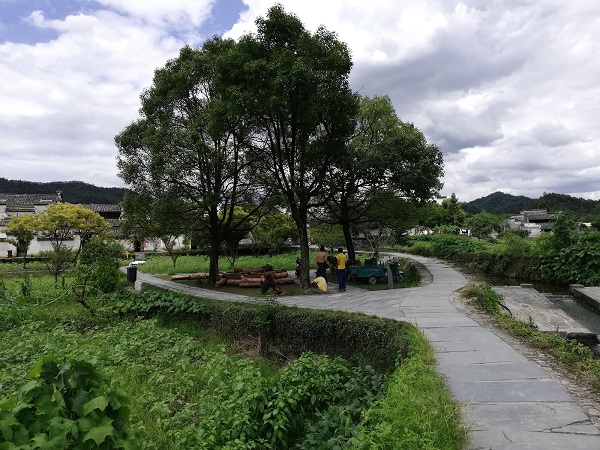
Huang family temple
The temple is also known as Shang Detang (尚德堂, Shàngdé tang). It was built in 1531 and rebuilt in 1986.
The masonry structure has two floors. The land area of the temple is around 400 square meters.
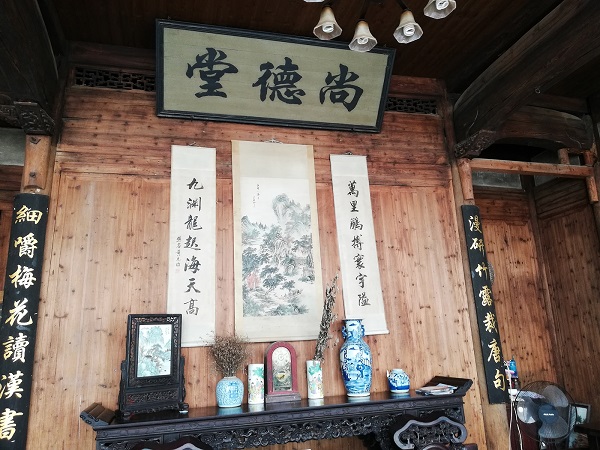
Yufutang
The Yufutang hall (膺福堂, yīng fú tang) is located in the Xidi ancient village. It was built in the 3rd year of Emperor Kangxi of the Qing Dynasty (1644-1911). It is the former residence of Hu Shangshang, the 25th ancestor of the Qing Dynasty.
Chasing Hall
The chasing hall (追慕堂, zhuīmù tang) was built in the Qing Dynasty during the Jiaxu period (AD 1794). It’s the ancestral hall belonging to Xidi’s Hu family. The building is generally arranged in a north-south direction with the entrance on the south side.
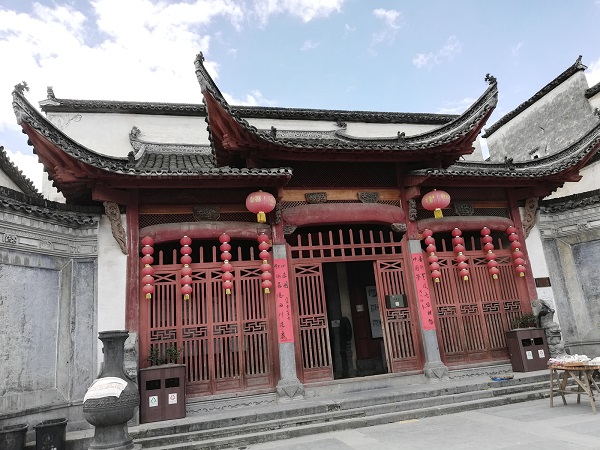
The space of the chasing hall has a clear sense of sequence. From the front square of the temple, through the entrance hall to the square patio to the lobby, and then from the two sides into the rear of the strip-shaped patio, it finally reaches the place where the ancestors are enshrined. The square in front of the temple is a narrow strip-shaped plane with an aspect ratio of about 3:1.
The wooden fence door of the ancestral hall is about 9 meters away from the outer wall of the opposite house, and the mouth of the ancestral hall is nearly 5 meters high. Therefore, the proportion of the entrance plaza is 1:2 (aspect ratio), which makes it easy to view the details of the facade.
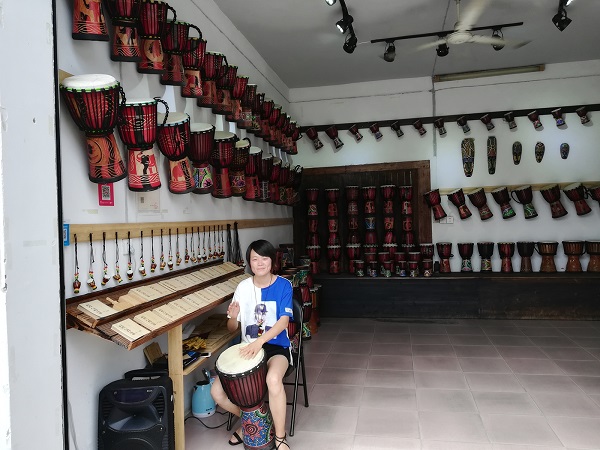
There are two squats at the entrance to the ancestral hall. The height difference between the roofs is very small, and the horns are raised high, as if the shape of the eyebrows is amazed. Standing on the wall opposite the ancestral hall, you can easily see the roof sloping faces the distant sky.
Da Fu Grand House
The Da Fu Grand House, built during the Qing dynasty, is located on the main street in Xidi ancient village. It’s an old residence of the Hu family. The doors of the main hall are carved with plum flower patterns and the windows with paper cuts in the Ming style.
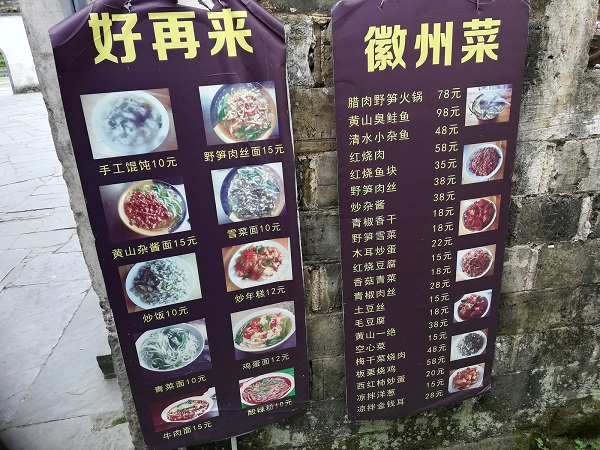
Food and Shopping
There are lots of restaurants and shopping stores in the village. Finding food and drinks is never an issue in the Xidi village.
However, be a bit cautious about the restaurant owners as most of them will try to invite you to their restaurants.
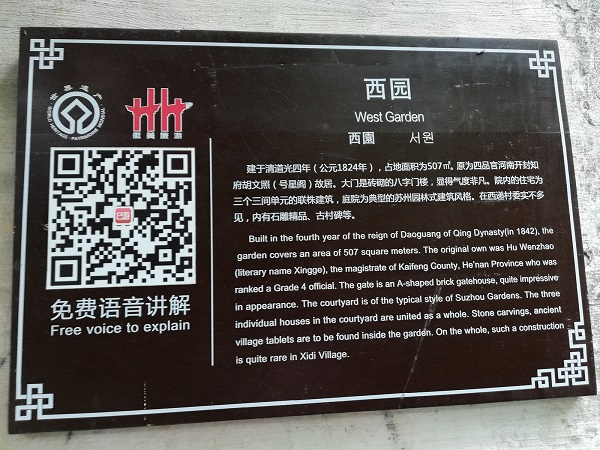
For shopping, I think the prices are slightly higher in Xidi, but it’s okay to buy something if you genuinely like – probably you won’t be coming to Xidi again (don’t forget to bargain though). 🙂
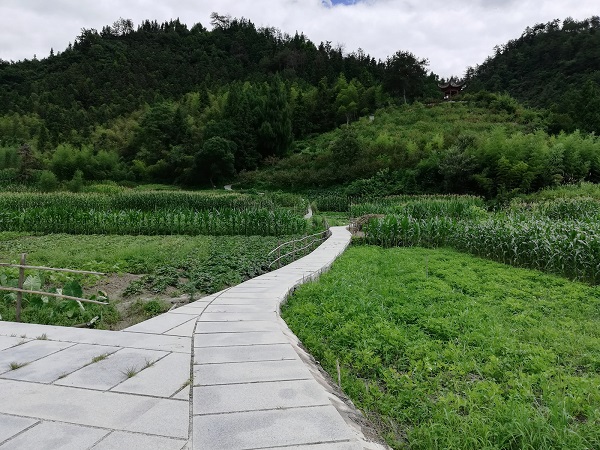
Stay safe
Xidi is a safe travel destination (in fact, it’s safer anywhere I China). Make sure to carry an umbrella and some water if you are travelling to Xidi in the summer season.
If you are being over pursued to buy something, just ignore and walk away.
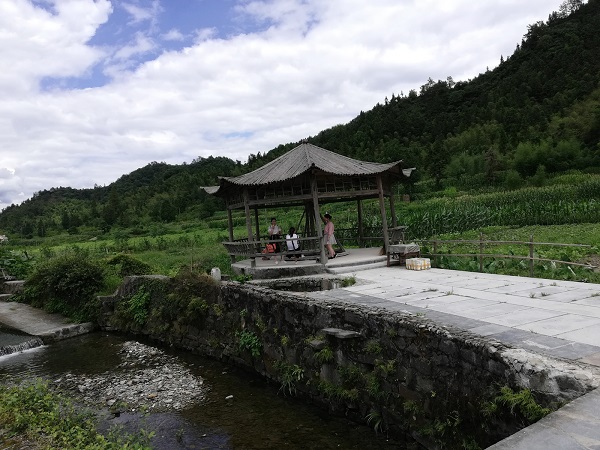
In summary, so far, my trips to each and every Chinese city has been a wonderful experience. Xidi wasn’t an exception and I absolutely loved visiting the ancient village. If you are coming to Anhui province, Xidi indeed deserves a visit. The scenery along the village is so lovely that I’m sure you’d love the ancient village.
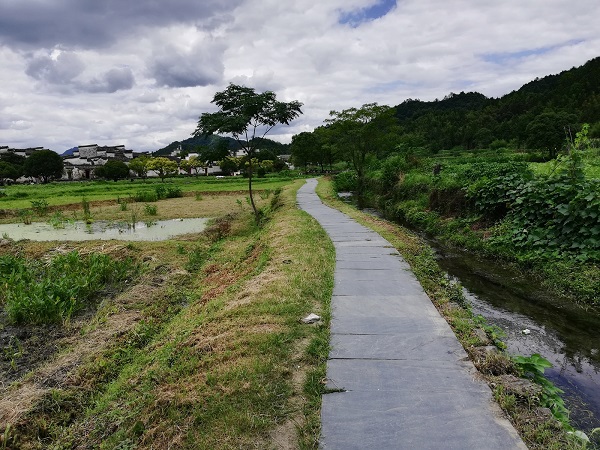
That’s all in this Huangshan travel guide blog-post about the Xidi ancient village.
If you have any question about the Xidi village of Huangshan city or simply about China tours, feel free to post in our forum so that others could also contribute and learn. For regular updates like us on Facebook, or follow on Twitter!
If you find the write-ups useful, don’t forget to buy me a beer!
Wish you a great time exploring Anhui’s Xidi ancient village!
Cheers!
Last updated: Tuesday, August 21, 2018